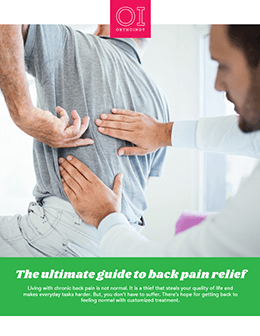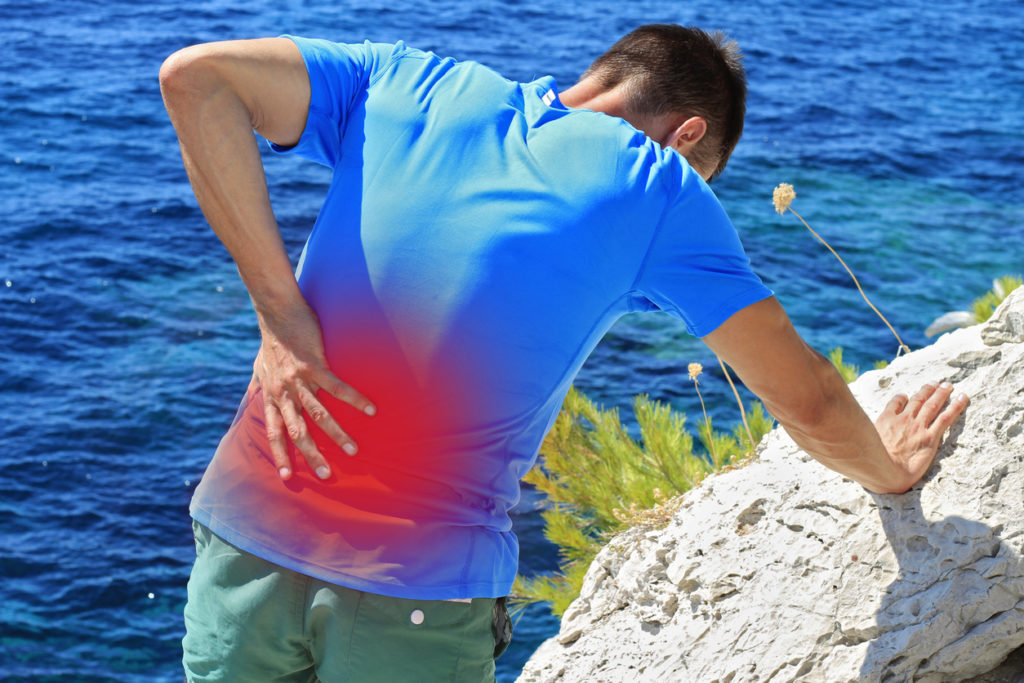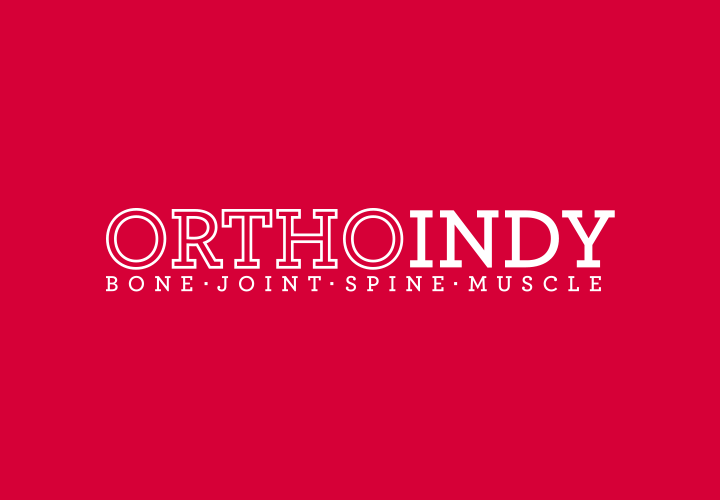THIS POST IS PART OF THE ULTIMATE GUIDE TO BACK PAIN RELIEF
One of the most common reasons people seek the care of a physician is because their back hurts. There are many different back pain causes, and—for 90% of people—their spine discomfort can be treated successfully without surgery.
Read on to learn common back pain causes and how with the right treatment or preventative measures you can get relief.
Back anatomy
Your spine is made up of 24 bones, called vertebrae, which are stacked on top of one another. These bones connect to protect the spinal cord. The seven small vertebrae that begin at the base of the skull and form the neck comprise the cervical spine.
The spinal cord and nerves travel through the spinal canal carrying messages between your brain and muscles.
The intervertebral discs between your vertebrae are flexible, flat and round discs and are about a half-inch thick. They act as shock absorbers when you walk or run and allow motion between the vertebrae.
What are common back pain causes?
Anyone can develop back pain, however certain factors can increase your chances.
- Age
- Lack of exercise
- Excess weight
- Disease
- Improper lifting
- Smoking
Pain can come on suddenly and last less than six weeks (acute), which may be caused by a fall, heavy lifting or sudden incorrect movement. Chronic pain is less common and can last more than three months.
Conditions commonly linked as back pain causes include:
- Muscle or ligament strain from heavy lifting or a sudden movement
- Bulging or ruptured disc
- Arthritis
- Skeletal irregularities
- Osteoporosis
What are the symptoms of back pain?
While back pain causes can differ, many of the symptoms associated with back pain will be similar across a range of conditions.
- Muscle achiness in your back
- Shooting or stabbing pain
- Pain that radiates down your leg
- Limited flexibility or range of motion of the back
- In extreme cases, bowel or bladder problems
How is back pain diagnosed?
To determine why your lower back hurts, a physician will ask you about your medical history and symptoms. They will also conduct a physical examination.
An X-ray or MRI may be necessary to confirm the diagnosis and determine if there are other problems.
Make an appointment with an OrthoIndy spine surgeon
How do you get relief from back pain?
Regardless of back pain causes, in most cases, pain will go away on its own with rest. Other nonsurgical treatment options include:
- Nonsteroidal anti-inflammatory drugs (NSAIDs), such as ibuprofen
- Narcotics prescribed by your physician
- Cortisone injections
- Physical therapy
- At home exercise and stretching
If your back pain causes are related to a chronic condition, surgery may be necessary and depends on your diagnosis.
How do you prevent back pain?
Motion, exercise, and stretching are important to strengthen your back and prevent injury. Correct posture when sitting and correct movement when lifting is also important. It is also important to maintain a healthy weight.
Learn more about treatment options for neck and back pain at OrthoIndy.
Schedule an appointment
Your well-being is important to us and we can help pinpoint your back pain’s cause. Click the button below or call us to schedule an appointment with one of our orthopedic specialists.
If your injury or condition is recent, you can walk right into one of our OrthoIndy Urgent Care locations for immediate care. For rehabilitation and physical therapy, no referral is needed to see one of our physical therapists.

Get the Ultimate Guide to Back Pain Relief
Our comprehensive guide will help you understand back pain and its different causes, like sciatica, herniated disk, scoliosis, pinched nerves and more.





